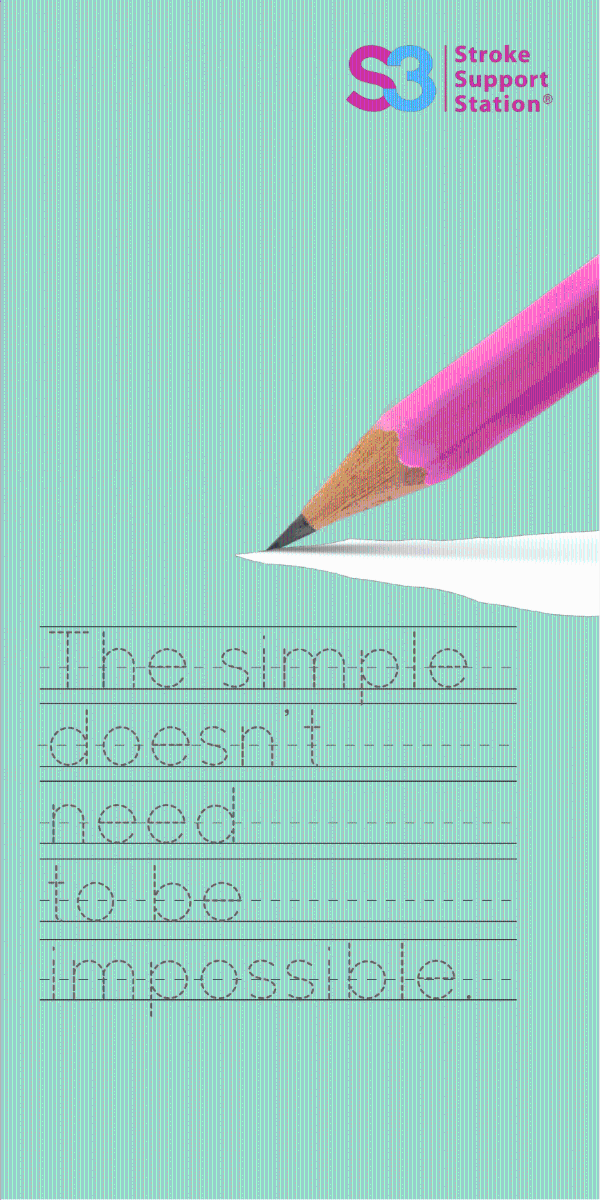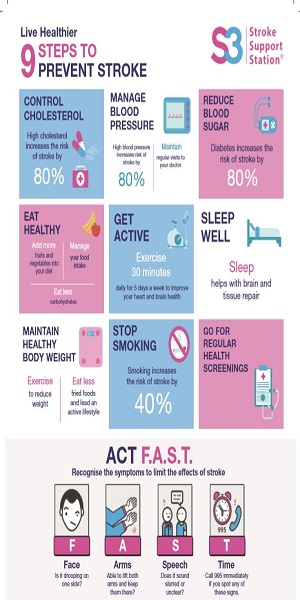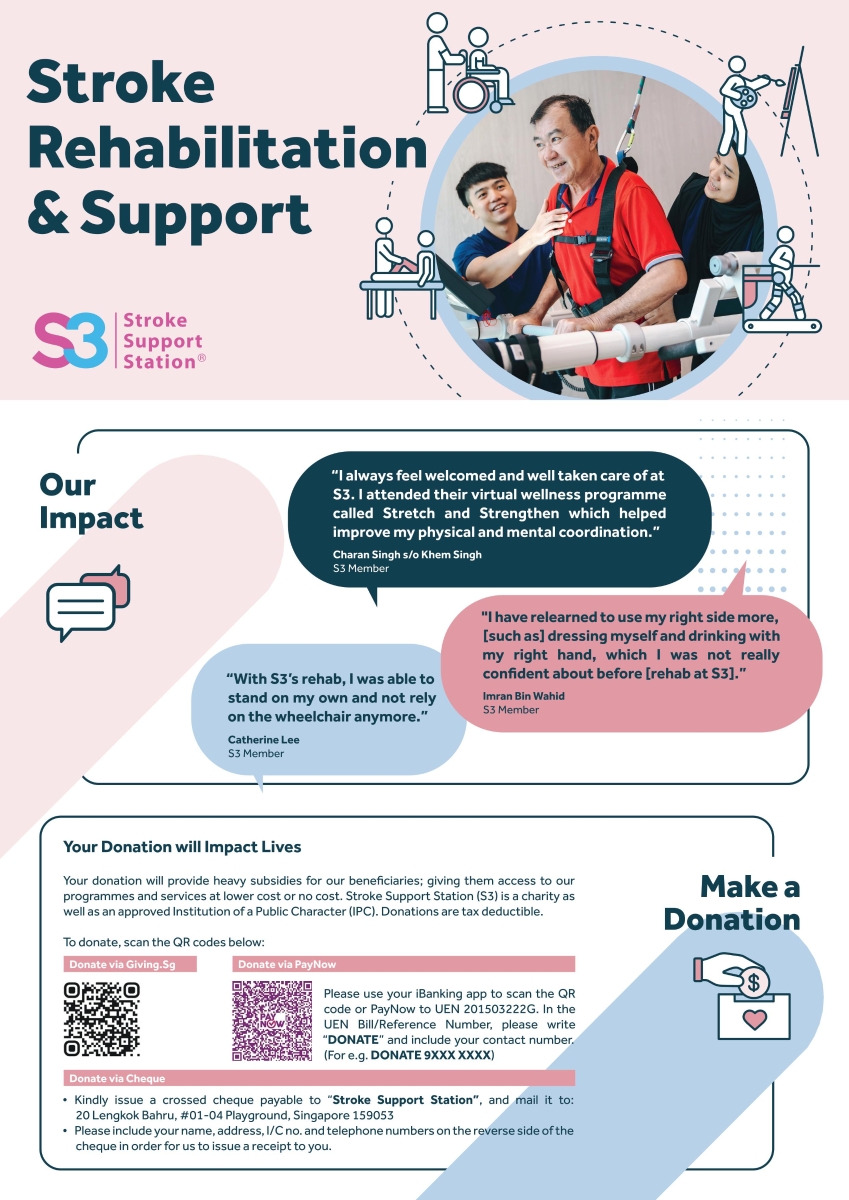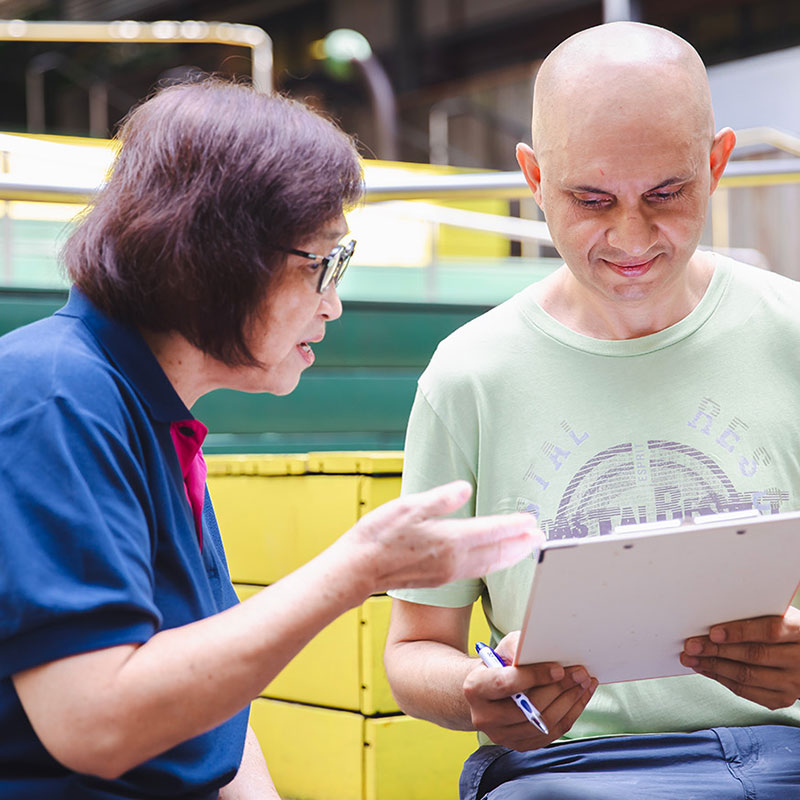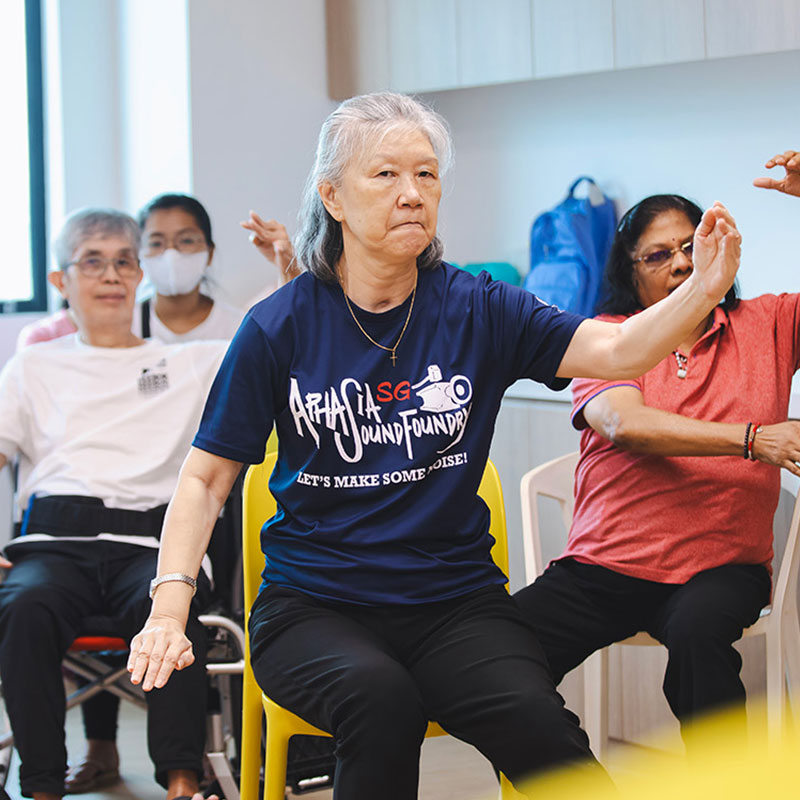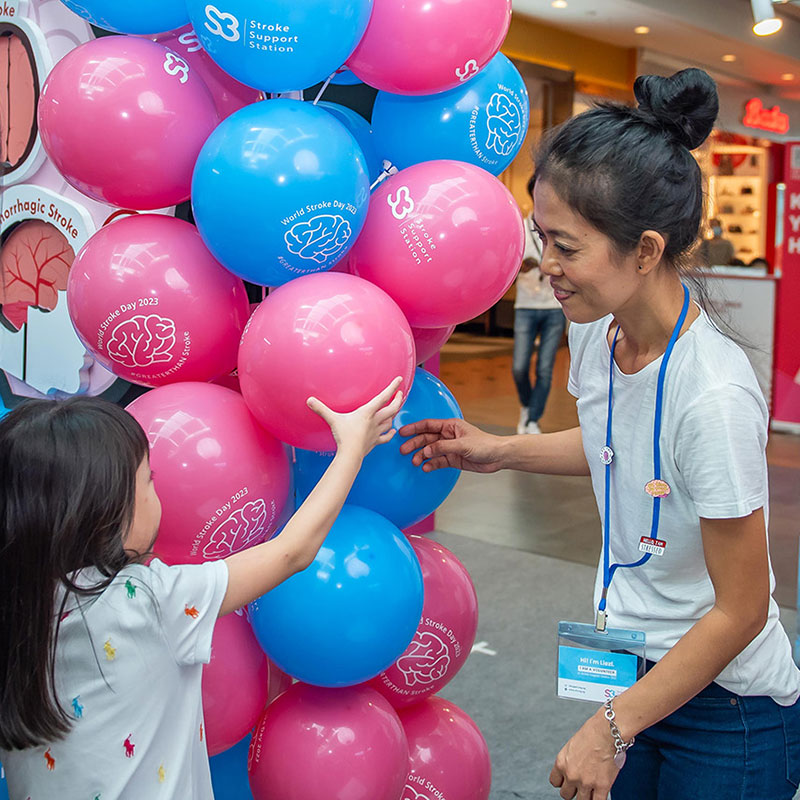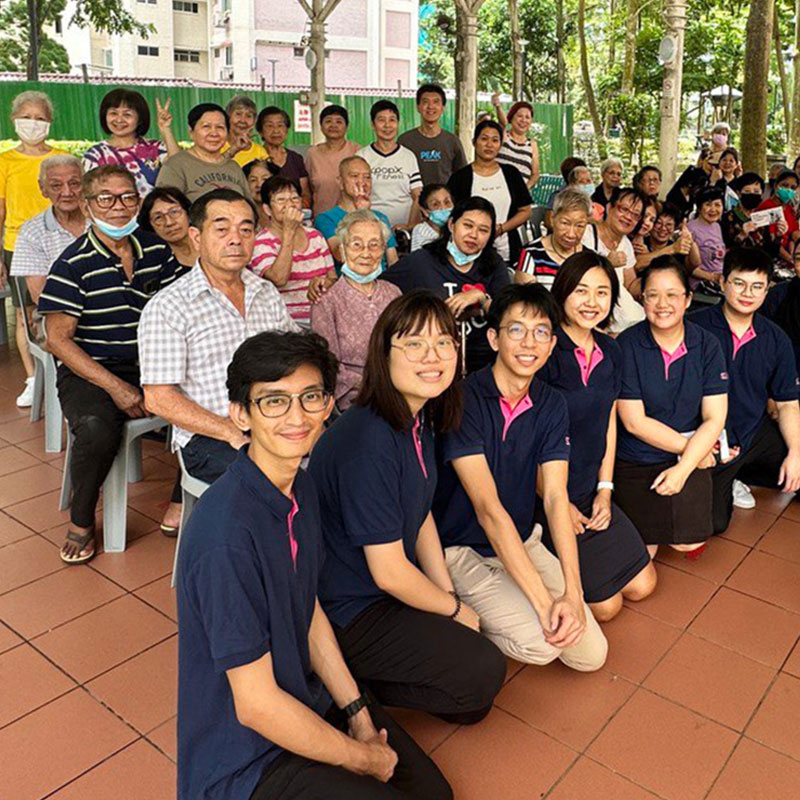Balancing Lives
We recognise that balancing the care of a stroke survivor and other life commitments is challenging and this requires plenty of readjustments, particularly when it also involves managing the career expectations and the lives of other family members.
TRAIN THE CAREGIVER
As the primary caregiver of a family member who has suffered a stroke, you are eligible to apply for the Caregivers Training Grant (CTG). The grant provides subsidies to the caregiver training course fees.
To apply for the CTG grant, select a Caregiver Training Course from here.
MINDFULNESS AWARENESS PRACTICE
What is mindfulness?
Mindfulness is the ability to pay attention to the present experience, without judgement or criticism, but with open curiosity and kindness.
Mindfulness is for everyone, a secular practice that helps build mental and emotional resilience. By practising mindfulness, we get to know ourselves better, learn to relax and detach from stress and find better ways to navigate the pressures of life.
How do we practise mindfulness?
Mindfulness can be cultivated informally, by adopting a mindful approach to life, and formally, through mindfulness meditation practice.
Adopting a mindful approach to life
Switching off the autopilot
Have you ever found yourself suddenly at your place of work and being unable to recall the commute? Alternatively, noticed that all the food on your plate has gone but being unable to remember having eaten it? Mindfulness is an antidote to the disengagement we may experience during the day by reminding us to pay attention to the everyday activities we do unconsciously.
Try this. When you brush your teeth in the morning, make your morning cup of coffee, or commute to work, observe what is happening around you – what you can see, hear, smell and feel. Allow yourself to be fully aware of your senses in each moment, no matter how mundane. The ordinary moments may feel a little less, ordinary.
Forgetting about the past and future
Most of us spend a lot of time dwelling on memories of the past and worrying about what may or may not happen in the future. For example, when we are at work, we fantasise about being on vacation; on vacation, we worry about work.
Mindfulness reminds us to return our attention to the present, allowing us freedom in our response to challenging thoughts, emotions and experiences. It does not mean that we let go of all creative musings and abstract thoughts, but by being aware, we have the choice to disengage from these thoughts and focus on the present moment or engage and use the creative functions of our minds.
Responding, not reacting
Reacting causes unnecessary stress. Have you ever been agitated when a friend has made an insensitive comment? Or yelled at your co-worker when they have made a mistake? These may have been moments when you reacted impulsively, rather than responded thoughtfully.
By practising mindfulness, we learn that immediate reaction to a stressfull situation may not always be the best solution. By paying attention to the present moment, even in the midst of a difficult situation, we learn to increase the gap between our impulses and our actions. As this allows us to thoughtfully respond in a way that does not lead to harm.
Instead of lashing out in anger or furrowing your brows in annoyance, stop, take a breath, recognise the emotion you are feeling and ask yourself – how do you wish to respond?
Exercising a mindful attitude
Mindfulness is about cultivating a non-judgemental and kind attitude towards ourselves and our present experiences. It means being aware of the present moment in a kind, open and curious way, accepting it exactly as it is. This is not to say that when we are truly mindful, we will never dislike, judge or criticise our experiences, but if we do, we should return to an attitude of kindness. Engaging in such moments of mindfulness helps us to develop a kind attitude towards ourselves and others in the long term.
Mindfulness meditation
Although ancient in roots, mindfulness meditation is suited for modern times. It is a practice that can be done by anyone, regardless of age, background or religion.
Mindfulness Basic
Posture
Meditation can be done sitting, walking, standing or lying down, as well as in the midst of activities. People practise meditation in a comfortable sitting posture. You can either sit on a chair or a cushion on the floor, your hands resting on your knees or lap. In all sitting postures, keep your back as upright as you can to promote alertness, but try to remain at ease and not too rigid.
Eyes
The eyes can either be closed, or open but softly gazing at the ground.
Location
Choose an area where you will not be disturbed and can continue to return to.
When to meditate
Choose a time of day when you will be most alert and least distracted, such as the first thing in the morning or before going to bed. What is important is that you settle on a regular daily time and follow it consistently.
Length of time
Start small with 5 minutes of meditation a day. Over time this can be progressively increased to 25 minutes or even more.
Anchor
In meditation, we use an anchor to keep our minds from being distracted by our thoughts, stimuli, and emotions. We choose to use the breath as our anchor as it is always with us, is accessible, and we neither associate pleasant or unpleasant feelings with it. It is possible to use other anchors, such as images or a repeating word.
Mindfulness Practice
Relax into your posture
Settle into a comfortable position on a chair or on the floor. Bring your attention to your seated body. Take a few deep breaths to let yourself relax, then let your breathing return to normal.
Bring awareness to the body
Bring your attention to your feet - feel the contact of the feet with the floor. Notice their weight, heaviness, touch. Notice the position of your legs - be aware of their weight, pressure, touch. Observe the contact of your back against the chair or how you are holding your body upright. Spend a few moments exploring these sensations.
Turn your attention to your abdomen. We often hold tension in this part of our body. Do you notice any tightness or tension? If so, try to relax your abdomen by breathing directly and more fully into this area.
Turn your attention to your hands. Are they tense or relaxed? Relax your hands. Notice your arms and focus on how they feel, how they are placed. Next, bring your attention to your shoulders. If they are tight, let them release.
Now notice your throat and jaw - another place where we often hold tension. Relax your jaw and then soften your face. Relax and breathe.
Spend a minute or two to silently scan your whole body, noticing whether there are still areas of tension. If so, invite them to relax.
Focus on your breath
Bring your attention to your breath. Notice the physical sensations of your breath as it moves in and out of your body. Notice how it affects your abdomen, nostrils, and chest, and choose one of these areas to be your anchor spot for feeling your breath. Try to keep your attention on your anchor spot – one breath at a time. Don’t control your breath, but let the breath breathe itself.
Mind-wandering
You will find that your mind, even with the best of intentions, will start to wander away from your breathing. It is normal and happens to most people. When you notice your mind wandering or thinking, just relax. Then, very gently but firmly, bring your attention back to the breath.
Continue to keep your attention focused on your anchor spot over whatever period of time you choose – 5, 15, 25 minutes, or longer.
CARING FOR THE CAREGIVER
There is intense pressure on caregivers who have to juggle between a full-time career and caring for a loved one who suffered from a stroke - especially in the initial stages when there is a significant amount of adjustments to their daily routine.
Downloads
